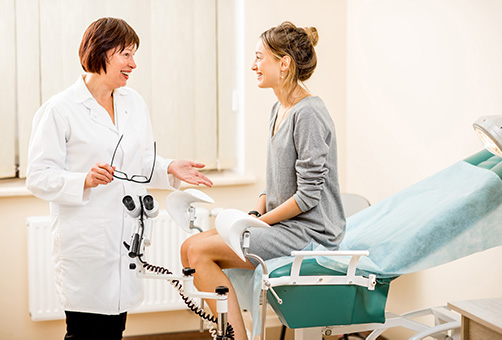The importance of the Pap Test for Prevention
The Pap Test is named after Dr Papanicolaou, who invented it. It is intended for all women aged 25 to 65. However, it is possible to do it before and after, for example, during menopause, to check the state of the uterus and hormone levels or the endometrium conditions.
It is a non-invasive examination carried out during a visit to the gynaecologist. It allows you to prevent tumours because it can identify pre-cancerous cells that could become dangerous over the years. Thanks to this preventive examination, it is now possible to drastically reduce the mortality of women due to cervical cancer.
Indeed, in the UK, statistics indicate that cancer numbers are on the rise, with over 1000 cases per day. More or less, 40% of these tumours can be prevented not only with a correct lifestyle, therefore, by eliminating or reducing smoking, alcohol and chemical additives, but also with preventive examinations.

What is the difference between Pap Test and HPV Test?
The HPV Test is a molecular test identifying HPV infections, the Human Papilloma Virus. It can be integrated or replaced by the Pap Test. Still, it is usually performed in case of cellular abnormalities highlighted during the Pap Test to confirm or exclude HPV infection. The difference also lies in the type of test: the Pap test is a cytological test which involves the analysis of the cells taken under a microscope. At the same time, the HPV Test is a molecular test that detects the cells' DNA and can also be performed on a urine sample.
Pap Test: what is it?
The Pap Test is a preventive test for the early detection of cervical cancer. It can be performed by all healthy women and especially after the start of sexual activity. The exam can identify a possible HPV infection. The human papillomavirus includes several variants, many of which are low-risk, i.e. are not potentially cancerous. Still, there are two strains, HPV 16 and HPV 18, which can develop into cancer.
The Pap Test can identify lesions that could become cancerous.
The test is also used for other analyses: for example, identifying bacterial and viral infections or infections caused by fungi, such as candida. Furthermore, it helps gather information on the female endocrine system even after menopause.
Pap Test: how to do it?
The examination is carried out during a routine gynaecological visit and consists of inserting a retractor into the vagina, which makes the cervix visible. Then, a small amount of material is taken with a small brush. The secretion is then fixed on a slide and analyzed under a microscope to search for any lesions or anomalies. The results will be available in a few days.
What precautions to take before having a Pap test?
Before undergoing the Pap Test, gynaecologists recommend not having sexual intercourse in the 24 hours preceding the visit and not inserting creams, douches or vaginal ovules. Furthermore, the Pap test should not be done during the menstrual cycle; therefore, it should be booked at least one week before the expected periods start or at least three days after the deadline. These precautions are necessary for perfect visibility of the cells taken.
What to do in case of a positive Pap Test?
A positive Pap test result means that abnormal cells were found, and further tests are needed. The most frequent tests, in this case, are the colposcopy, the biopsy and the HPV Test. Knowing that a positive result does not indicate cervical cancer is essential.
Pap smear: how often to do it?
Doctors recommend testing every one to three years as a screening. The reason is that cervical cancer is without symptoms in the early stages. Therefore it is possible to prevent its appearance and intervene in time.
Pap smear: when to do it?
Generally, the Pap test is done from the age of 25 onwards or, in any case, after the start of an active sexual life and up to the age of 65. However, it is possible to do it during pregnancy, informing the doctor of your condition, during menopause and even before age 25. Likewise, it is possible to have a Pap test even if you take the pill or if you use an IUD.
Does the Pap smear hurt?
The Pap smear is not a painful test. It can be slightly annoying because it involves inserting a dilator instrument (the speculum) into the vagina. Still, a lot depends on the delicacy and competence of the operator (gynaecologist or midwife) and the ability to remain relaxed, for example, with deep breaths.
Can you have a Pap smear if you are a virgin?
It is possible to have a Pap smear even if you are a virgin. In this case, it is essential to notify the doctor, who will take special precautions not to damage the hymen and use a less invasive instrument for dilatation.
Furthermore, even if it is infrequent to have a papillomavirus infection before sexual intercourse, rare forms of infection can develop even without intercourse. It is good to know that vaccines against human papillomavirus infection do not replace the need to have this test periodically.
